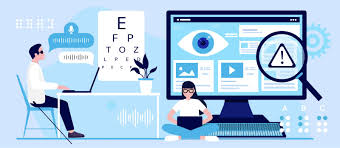Augmented Reality: Revolutionizing Accessibility for Visually Impaired Individuals
AR for Accessibility: A New Era of Inclusion
Augmented Reality: Revolutionizing Accessibility for Visually Impaired Individuals
Augmented reality (AR) is rapidly transforming various industries, and its potential to enhance accessibility for visually impaired individuals is particularly exciting. AR overlays digital information onto the real world, creating immersive experiences that can bridge the gap between the seen and unseen.
AR for Accessibility: A New Era of Inclusion
AR has the power to empower visually impaired users by providing them with a greater understanding of their surroundings and enabling them to interact with the world in new ways. It can be a powerful tool for inclusion, breaking down barriers and promoting equal access to information and experiences.
Unveiling the Potential of AR for Visually Impaired Users
Navigating the World with Confidence: AR-powered Wayfinding
Wayfinding can be a major challenge for visually impaired individuals. AR can revolutionize this by providing real-time navigation assistance. Imagine an AR app that uses a smartphone camera to identify landmarks, street signs, and other visual cues. It could then provide audio or haptic feedback to guide the user safely to their destination. AR can also enhance indoor navigation by creating interactive maps that overlay digital information onto the real world. These maps can provide turn-by-turn directions, identify nearby amenities, and even highlight potential obstacles.
Interactive Experiences: Making the Invisible, Visible
AR can make the invisible, visible by providing interactive descriptions of objects and scenes. Imagine an AR app that scans a product label and provides a detailed audio description of its contents, ingredients, and instructions. AR can also be used to create interactive museum exhibits that provide audio descriptions of artworks and artifacts, allowing visually impaired users to experience the beauty and history of these cultural treasures.
Transforming Accessibility with AR Technology
Beyond Visual Perception: Exploring AR's Sensory Capabilities
AR is not limited to visual enhancements; it can also cater to other senses, such as hearing and touch. AR apps can provide auditory cues to alert users to potential hazards or important information. For example, an AR app could use sound to indicate the presence of stairs, curbs, or traffic lights. AR can also be integrated with haptic devices to provide tactile feedback, allowing users to “feel” objects and environments in the real world.
Breaking Barriers: AR for Inclusive Design and User Experiences
AR has the potential to transform product and service design, making it more inclusive for people with disabilities. Designers can use AR to create prototypes and mockups that incorporate accessibility features from the outset, ensuring that products and services are usable by everyone. AR can also be used to test and refine user interfaces, making them more intuitive and accessible for visually impaired users.
In conclusion, AR has the potential to significantly enhance accessibility for visually impaired individuals, opening up a world of possibilities and fostering greater inclusion.
Summary
- AR can improve wayfinding by providing real-time navigation assistance.
- AR can provide interactive descriptions of objects and scenes, making the invisible, visible.
- AR can cater to other senses besides vision, such as hearing and touch.
- AR can be used in inclusive design and user experience to make products and services accessible to everyone.
